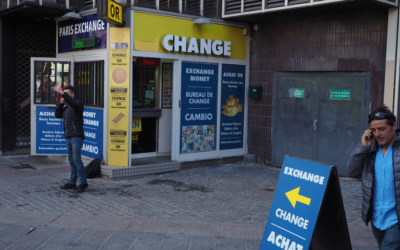Tips for Disaster Relief Humanitarian Workers
Many international voluntary organizations deliver humanitarian relief for people caught in large scale disasters, such as the super typhoon that devastated the city of Tacloban and other areas of the Philippines.
Because disasters, such as earthquakes, typhoons, tsunamis, etc. happen with little or no warning, international humanitarian workers must be prepared to go quickly to different countries with different environments, cultures and health and safety risks. If you are an international volunteer, your immunizations have to be up-to-date and appropriate disease prevention measures such as anti-malaria medication, must be on hand to maintain your health. You have to consider your personal health and welfare before, during, and after the assignment. Personal security and stress may be issues. You may have to be self-supporting with your own food, water, medical equipment, shelter, etc. when you arrive at the site of the disaster.
Preparation
Before you go, you can get immediate background health and safety information for the county involved in the disaster by registering you destination with Sitata. You will also receive recent and real-time health and safety alerts. If new health or safety risks develop at the site where you are working, Sitata will provide you with an instant electronic alert. In addition, you should consider registering your travel itinerary with your government before leaving or at your embassy when you arrive.
If you take medications, are pregnant or have a chronic health condition, check with your doctor to be sure you will be ok where you are going. Health care at the site may be extremely limited.
Bring A Travel Health Kit
At Sitata, we recommend that all international travellers assemble and carry a travel health kit, but this is even more true for relief workers. What you bring in your health kit depends on how long you’ll be abroad. In a prior post, What To Bring In Your Health Kit, we provide some ideas for what to pack. A more detailed list was created by Dr. Brian Gushulak, one of Sitata’s Scientific Advisers, and can be found in the Yellow Book which is published by CDC. He includes what toiletries to take, clothing you might need, safety and security items (like cash, money belts, etc.), and items to make daily living easier.
Pay Attention To Your Stress Levels
Providing humanitarian aid in the middle of a disaster response is stressful. An American Red Cross study recently found that more than 40% of aid workers found their experience to be more stressful than expected. The source of your stress could be a number of things such as exposure to violence, illness, death, and destruction. Some aid workers have found that brining family photos can help as it will remind you of the world you left behind. In addition, keeping a journal of your experiences can help. Some organizations also send stress management counsellors to support their field staff.
When you return, there may be lasting effects from your experiences. Studies have indicated that more than 30% of aid workers report depression shortly after returning home. Don’t hesitate to seek professional counselling should you find yourself depressed, having flashbacks, in a low state of energy, or if you’re having trouble sleeping.
Be Aware Of Your Surroundings
Often in a disaster, buildings will become unstable and structural collapses or falling debris can be common. Law and order may be lacking. Stay alert to your surroundings and the people around you. Avoid situations that may put you at risk of personal injury. For example, you should try to stay with your humanitarian group at all times and avoid drifting into unfamiliar territory on your own. If you do become injured or sick, seek medical attention immediately.
Stay Safe
The most important thing that you can do is to keep yourself healthy and safe so that you can continue to support those in need. For even more tips on crisis response, check out Dr. Christopher Van Tilburg, Editor, NewsShare and Communications, International Society of Travel Medicine, who has also compiled a quick check list to guide international emergency response workers going to disaster sites.



